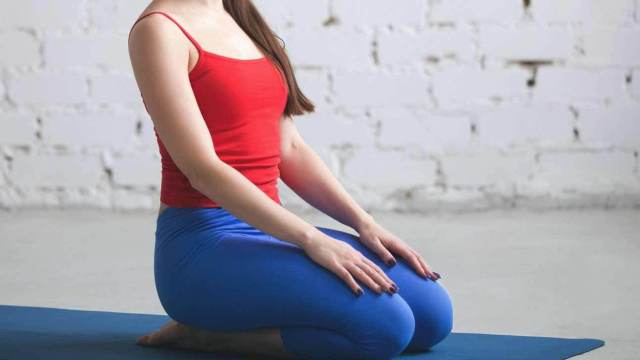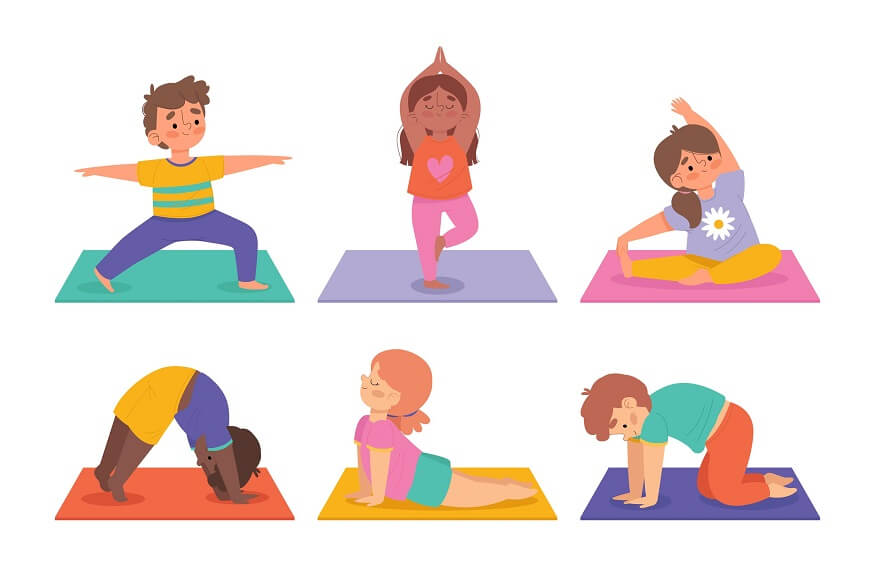
Millions of people around the world manage diabetes, a condition that requires careful attention to diet, medication, and lifestyle. While these are crucial, there's another powerful tool you might not consider: yoga. This ancient practice goes beyond physical exercise, offering a holistic approach to well-being. Yoga poses, breathing techniques, and meditation can work wonders for people with diabetes, helping to regulate blood sugar, reduce stress, and improve overall health. Let's explore how yoga can become your secret weapon in managing diabetes and feeling your best.
Yoga Poses for Overall Well-Being
This section explores yoga poses that target various aspects of health beyond just blood sugar control. These poses can help people with diabetes manage their condition more effectively.

Surya Namaskar (Sun Salutation)
- Helps improve blood circulation and stimulates metabolism
- Practice 5-10 rounds daily
Paschimottanasana (Seated Forward Bend)
- Stimulates the pancreas, which can help regulate insulin production
- Hold for 30-60 seconds
Ardha Matsyendrasana (Half Spinal Twist)
- Improves digestion and stimulates the pancreas
- Hold for 30-60 seconds on each side

Dhanurasana (Bow Pose)
- Stimulates the pancreas and abdominal organs
- Hold for 15-30 seconds; repeat 3-5 times
Balasana (Child's Pose)
- Reduces stress, which can help manage blood sugar levels
- Hold for 1-3 minutes
Viparita Karani (Legs-Up-the-Wall Pose)
- Improves circulation and reduces stress
- Hold for 5-10 minutes
Mandukasana (Frog Pose)
- Massages the pancreas and abdominal organs
- Hold for 30-60 seconds
Vajrasana (Thunderbolt Pose)
- Aids digestion and can be practiced after meals
- Hold for 5-10 minutes

Sarvangasana (Shoulder Stand)
- Improves blood circulation and stimulates the thyroid gland
- Hold for 30-60 seconds (if comfortable and safe for you)
Pranayama (Breathing Exercises)
- Particularly Kapalbhati and Anulom Vilom
- Practice for 5-10 minutes daily
Bhujangasana (Cobra Pose)
- Stimulates the abdominal organs, including the pancreas
- Improves insulin production and blood circulation
- Hold for 15-30 seconds; repeat 3-5 times
Setu Bandhasana (Bridge Pose)
- Stimulates the thyroid gland, which helps regulate metabolism
- Improves digestion and stimulates abdominal organs by enhancing blood circulation
- Hold for 30-60 seconds, repeat 3-5 times
Benefits of Yoga
- Blood Sugar Regulation: Regular practice can help improve insulin sensitivity and glucose metabolism, improving blood sugar control.
- Stress Reduction: Yoga's focus on breathing and mindfulness helps lower cortisol levels, reduce stress, and positively impact blood sugar levels.
- Weight Management: Many yoga poses can help with weight loss or maintenance, which is crucial for diabetes management.
- Improved Circulation: Poses that involve stretching and twisting enhance blood flow, benefiting overall cardiovascular health.
- Pancreatic Stimulation: Certain poses like Dhanurasana and Ardha Matsyendrasana may stimulate the pancreas, potentially aiding insulin production.
- Enhanced Sleep Quality: Regular yoga practice can improve sleep patterns, which is important for hormonal balance and stress management.
- Increased Body Awareness: Yoga promotes mindfulness, helping practitioners become more attuned to their body's needs and signals.
- Muscle Strength and Flexibility: Many poses build strength and increase flexibility, improving overall physical fitness and reducing the risk of injuries.
- Mood Enhancement: The meditative aspects of yoga can help alleviate symptoms of depression and anxiety, common in people with chronic conditions like diabetes.
- Lifestyle Discipline: Regular yoga practice instills discipline that often extends to other areas of life, potentially improving adherence to diet and medication routines.

Do's and Don'ts for Safe and Effective Yoga
Do's:
- Do consult your doctor before starting a yoga routine, especially if you have any diabetes-related complications.
- Do practice regularly, ideally at the same time each day, to establish a routine.
- Do start with gentle poses and gradually increase intensity and duration as your body adapts.
- Do focus on your breath during practice, as proper breathing enhances the benefits of yoga.
- Do stay hydrated before, during, and after your yoga session.
Don'ts:
- Don't practice intense yoga immediately after eating; wait at least 2-3 hours after a meal.
- Don't push yourself too hard; listen to your body and avoid poses that cause pain or discomfort.
- Don't practice inverted poses like headstands if you have retinopathy or high blood pressure.
- Don't skip checking your blood sugar before and after yoga, especially when you're just starting out.
- Don't neglect to inform your yoga instructor about your diabetes and any related concerns or limitations.
Conclusion
This article has explored the multifaceted benefits yoga offers for diabetes management. From regulating blood sugar and reducing stress to improving overall well-being, yoga can be a powerful tool in your wellness arsenal. Remember, yoga is a journey, not a destination. Start slow, listen to your body, and with dedication and consistency, you can unlock the transformative power of yoga and experience a healthier, happier you.



.png)


